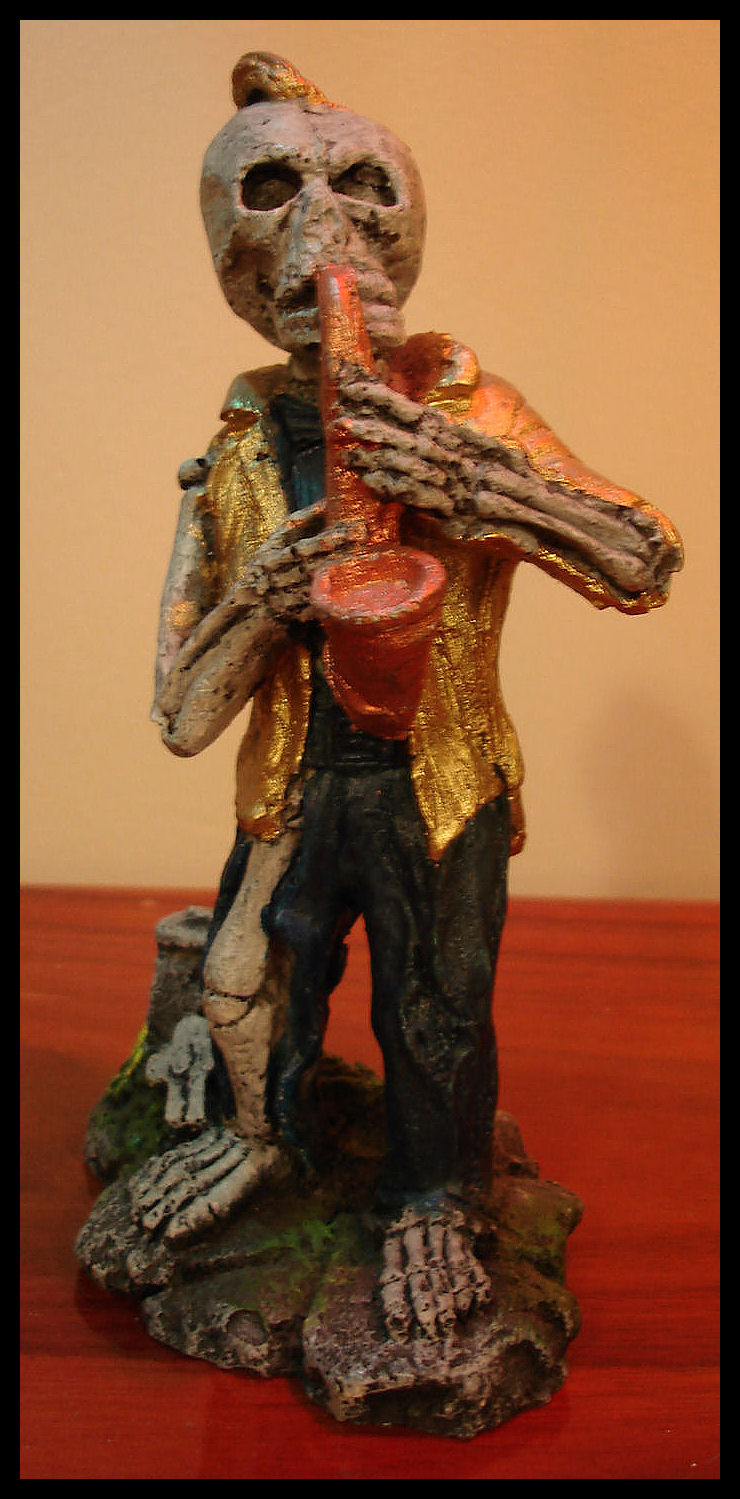Sure our students might want to be the next Coltrane, Getz, Mulligan, Dulfer, Koz, or maybe Kenny G. But the reality is, they very likely might not be, and for the ones that are, the road to get there is not usually a short one.
I had a student, who had a great deal of potential, but who wouldn’t put the necessary time in to reach his full potential. I guess he felt that he should just somehow wake up one morning and be able to play sax like he heard on his CDs & MP3s. I explained to him that it didn’t work that way. That these players worked for years to get to where they’re at. He didn’t get it.
He is one of these kids who has grown up in the video & computer game and 15 second ad world we live in. Instant gratification: if it doesn’t come fast, it’s a bore. It’s almost like we’re hard-wiring ADD or ADHD into them.
I’m sure we’ve all had students like this. This is seriously problematic. The question is how do you reach kids like this? It’s a challenge. The old standards like Rubank…Throw them out the window…Forget about them…They don’t work for kids like this…
The first time I encountered a student like this I had to rethink my teaching. All the methods that my instructors had used with me, and that I had learnt and been exposed to in school and university, were not helpful. I consulted with a couple of instructors I knew, went to the local music store, and started looking for introductory saxophone methods that used play-along CDs. That helped…For a bit….
I’d never used BIAB much, and didn’t even own my own copy, so that was out. I quickly came to realize: I was seriously screwed ❗ ![]()
OK, so now I had to dig deep, really deep, and try to find a way to reach this kid and motivate him. He had potential; serious potential. Luckily I have a good sense of humour, as did he. I also happen to be very quick with one liners, as was he.
So our weekly hourly (yes, we had hourly lessons because he wanted 60, not 30 minutes of time with me) became almost a stand-up routine in which we would play some, trade jokes (usually at the expense of each other), play some more, trade more jokes, and so on, and so, for an hour.
I had my studio set up so that parents could sit in another room, close the door, and watch TV, read, or do whatever they wanted. Over time, his mom ended up right in the middle of the action. She sat in the studio with us, and did whatever she brought that week: usually either reading or knitting. She found the whole thing entertaining, so looked forward to the weekly lessons as much as her son did.
Here’s an example of the kind of jokes I used with him…
One day at a pet store, I happened to walk through the aquarium section, and noticed a set of skeleton rock band figurines for a fish tank. One happened to be a sax player, so I bought it and hid it away in my studio until the appropriate time.
One day when my student was being particularly obstinate, I said to him: “You’re killing me”, and pulled out the figurine and held it up to his face. He doubled over in laughter, as did his mother. So from that time onward, whenever he was particularly difficult, I’d get the skeleton off the shelf, hold it up to his face and say “you’re killing me”. That would settle things down again for a while.
I wouldn’t recommend this (almost an “in your face”, interactive, stand-up comedy routine) as a teaching strategy for difficult students, or any students for that matter. But it did work with him because of who he was, who I was, and because of the relationship that we had developed over the 12+ months of working together.
My point here is that as saxophone teachers working one on one with students, we have to be extremely flexible and able to think on our feet. We have to be willing to put the time in outside of the lessons, in order to figure out how to best meet the needs of our students.
A cookie-cutter approach doesn’t work for all students. Flexibility and willingness to adapt our teaching style, be unorthodox (while still appropriate) when necessary, and be open to new learnings ourselves, are among the key elements in being successful in reaching our saxophone students, especially the more difficult ones.
BTW, this former student still stays in touch with me. He started university this fall, and is still playing sax. He now plays alto, tenor, and is hoping to get a bari in the next year or so. He also just spent 2 years playing bassoon in school. And while not studying music in university, he is planning to audition for 1 or 2 music classes.







Hello Helen,
Quote: “Sure our students might want to be the next Coltrane, Getz, Mulligan, Dulfer, Koz, or maybe Kenny G”.
Your talking about Candy Dulfer!? I’m from the Netherlands and wasn’t aware “our” Candy Dulfer is that well known!?. I heard her perform in Amsterdam last weekend and she IS good. But i didn’t know she’s so well known in Canada (& the world). Her dad was a car salesman & a free time sax player on the tenor. Nowadays he is a full time sax player also. I prefer Candy’s playing! Thanks Hans (Dulfer)!
Greetings,
Carlo
“Lily Was Here” put her on the map worldwide.
Hi Carlo. How are you doing?
Yes, I was talking about Candy Dulfer. I did not know that Hans Dulfer used to be a car salesman. I’m thinking he likes his career as a musician much better!
As Mal-2 said, the song Candy did in the early ’90s with Dave Stewart, “Lily Was Here“, really did introduce her to the world. I have a number of her CDs, and really like her alto playing. There are not that many alto players that I listen to, but she is definitely one of them.
Where did you see perform last weekend in Amsterdam? What kind of show was it?